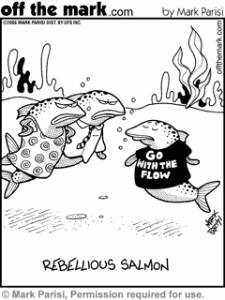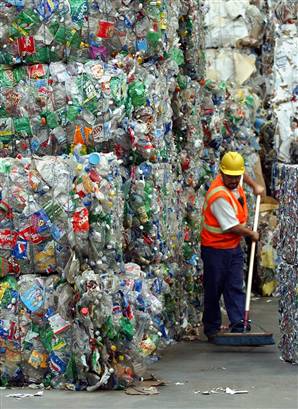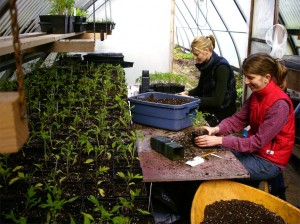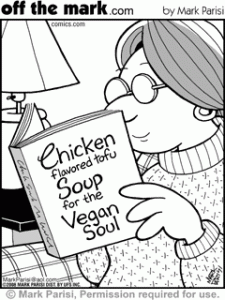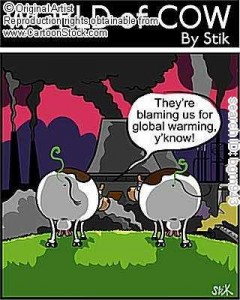
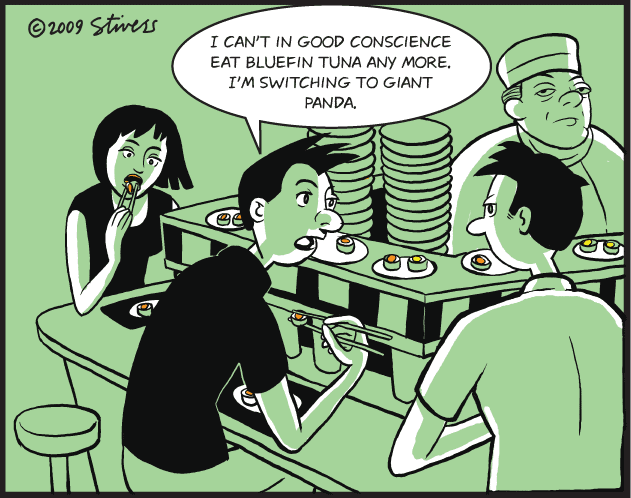


Good thing I didn’t have the tuna sashimi (one of the more popular ones!) As said in Richard Manning’s article : “As a rough rule of thumb, that factor of ten applies to each level up the food chain, which is why some fish, such as tuna, can be a horror in all of this. Tuna is a secondary predator, meaning it not only doesn’t eat plants but eats other fish that themselves eat other fish, adding a zero to the multiplier each notch up, easily a hundred times, more like a thousand times less efficient than eating a plant.”
Local is always best! The salmon was local, and not farmed. Living on Pender Island for the summer has given me access to fresh and local seafood, vegetables, poultry products, and cheese. Although many cannot recognize the differences in farmed salmon, it is important to buy wild, eco-friendly fish and fish products.
The main threat of farmed salmon is that they are contained in net-cages that connect to the open ocean. These farms are a severe hazard to the equilibrium of marine wild life, especially to their counterpart, the wild salmon.
Many of these farms have up to 500, 000 fish held in these nets that connect to open water. There are more then 100 of these fish farms raising salmon in secluded inlets up and down the coast of BC.
Fish and human waste, poisons, illnesses, and parasites from the farms can easily bypass and react with the adjoining ocean and ocean floor. The most harmful to wild salmon are the parasitic sea lice that latch onto wild young salmon on their journey from the rivers to the ocean. If the young salmon pick up too many sea lice, they will die.
Weather, animals, and mistakes made by fish farm workers can cause the nets to split or rupture letting the farmed fish to swim into the surrounding area. Seals and other predators are often killed by the farms to prevent this, only causing more disruption in the natural balance of marine life. Other marine animals get caught in the mesh and die.
A possible key to fixing this problem: Raising the farmed salmon in closed containment creating a solid blockade between farmed salmon and the external marine environment assists in serving marine wildlife, especially the wild salmon from the nuisances caused by these farms.
